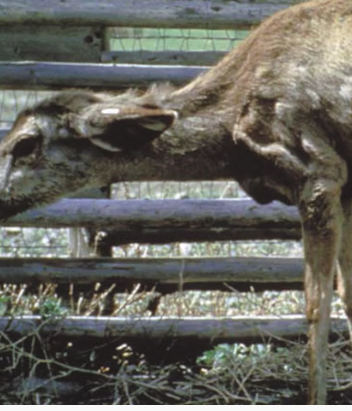Carbon monoxide (CO) is a colorless, tasteless, and odorless poisonous gas produced as a byproduct of incomplete combustion of carbon-containing materials. Even in seemingly well-ventilated areas where employees work, CO can accumulate rapidly. Exposure to CO poses serious health risks, including the potential for death.
According to the National Center for Environmental Health every year, at least 420 people die in the U.S. from accidental CO poisoning. More than 100,000 people in the U.S. visit the emergency department each year due to accidental CO poisoning.
Given these hazards, businesses must take proactive measures to safeguard their workplaces from CO exposure.
Here, discover the common causes of CO poisoning in business settings, the symptoms of CO exposure, identify employees at higher risk, and learn practical steps to mitigate this hazard to better protect employees.
 Keven Moore works in risk management services. He has a bachelor’s degree from the University of Kentucky, a master’s from Eastern Kentucky University and 25-plus years of experience in the safety and insurance profession. He is also an expert witness. He lives in Lexington with his family and works out of both Lexington and Northern Kentucky. Keven can be reached at kmoore@higusa.com
Keven Moore works in risk management services. He has a bachelor’s degree from the University of Kentucky, a master’s from Eastern Kentucky University and 25-plus years of experience in the safety and insurance profession. He is also an expert witness. He lives in Lexington with his family and works out of both Lexington and Northern Kentucky. Keven can be reached at kmoore@higusa.comCarbon monoxide poisoning at work happens with some degree of frequency. For instance, a few weeks back the Knoxville fire department responded to a 911 call after multiple people started feeling sick at a Sam’s Club in northeast Knoxville. When KFD arrived, crews learned several people had become nauseous and determined they were showing symptoms of carbon monoxide poisoning. It was later determined that their HVAC unit had malfunctioned. Nine were taken to the hospital for carbon monoxide poisoning.
The National Institute for Occupational Safety and Health reports that CO is produced mainly when the combustion of carbon-containing materials (e.g., gasoline, natural gas, kerosene, oil, propane, charcoal or wood) during the fuel-burning process is incomplete. This leads to more CO being emitted instead of carbon dioxide.
Common CO sources are:
• Faulty appliances: such as furnaces, water heaters or gas stoves that improperly burn fuel and release CO into the workplace,
• Internal combustion engines: such as those used by many cars, trucks, forklifts and other machines
• Equipment and power tools: like portable generators, lawn equipment and power washers that run on gasoline.
When CO is present in the workplace, here are certain signs that may be noticeable, including:
• Streaks of soot around appliances or fallen soot inside of a fireplace
• Excess moisture or condensation on surfaces
• Excess rust on pipes or appliance jacks
• Yellow or orange flames (instead of blue) in combustion appliances
• Water leaking from vents or flue pipes
• Damaged or discolored bricks on top of the chimney or an absence of an upward draft.
While many businesses utilize equipment, appliances, and machinery that can produce carbon monoxide (CO), certain industries and job roles pose a higher risk due to the nature of their work. Here are examples of individuals who may be at an elevated risk of CO poisoning:
• Welders: Welding processes often involve the use of gas-powered equipment, which can emit CO
• Drivers: Those who operate vehicles, especially in enclosed spaces like garages or loading docks, may be exposed to CO from exhaust fumes
• Auto Mechanics: Repairing vehicles in indoor spaces can lead to CO exposure from running engines or faulty exhaust systems
• Firefighters: Firefighters working in smoke-filled environments are at risk of inhaling CO during firefighting operations
• Dockworkers & Forklift Operators: Loading and unloading cargo in enclosed areas near running engines or generators can result in CO exposure
• Cooks & Bakers: restaurants and commercial bakeries and caterers.
• Other Industries Such As: Pulp and paper producers, Steel producers and petroleum refiners.

It’s important to know that additionally, certain groups of people are more susceptible to CO poisoning, including smokers, individuals with lung or heart conditions, and those living or working at high altitudes1. It’s crucial for employers in these industries to implement safety measures to prevent CO exposure and protect their workers.
There are early signs of CO poisoning. When inhaled, CO displaces oxygen in the blood, which can lead to oxygen starvation in vital organs. Recognizing these varying signs of CO poisoning is essential to help prevent serious injury or death:
• Early symptoms: Early CO poisoning symptoms often mimic the flu and include headache, dizziness, weakness, nausea and chest pain. These can be mistaken for other illnesses.
• Severe symptoms: Prolonged or high levels of CO exposure lead to confusion, vomiting, muscle weakness, collapse and loss of consciousness. Neurological symptoms, metabolic acidosis and cardiac issues may also occur.
It also is important to note that symptoms can vary by person, and some populations are more susceptible to CO poisoning, including the elderly; young children; those with preexisting heart or long-term conditions; those who work at high altitudes; and those with anemia, sickle cell anemia and elevated CO blood levels (e.g., smokers). CO poisoning also poses unique risks to pregnant workers and their unborn children.
CO poisoning can be reversed if it is caught in time, according to OSHA However, acute poisoning may cause permanent damage to body parts that require high oxygen levels, such as the brain and heart. Additionally, OSHA notes that significant reproductive risk is linked to CO exposure.
Given the seriousness of carbon monoxide (CO) hazards, businesses must proactively address the risk to prevent injuries or fatalities. Measures to take include:
• Ensure proper installation of equipment, appliances or other machines that may produce CO. This can be accomplished by following applicable manufacturer instructions and local building codes.
• Conduct regular inspections. Heating systems, chimneys, flues and other equipment that could produce CO should be inspected annually by professionals. Air in spaces where CO may be present should also be regularly tested for the presence of the gas.
• Educate employees. Staff should be trained on CO risks, symptoms and emergency procedures. They must also be encouraged to report any suspicious odors or symptoms, avoid overexertion if they suspect CO poisoning and leave contaminated areas.
• Check for proper ventilation. It’s vital to ensure adequate ventilation exists in enclosed spaces where fuel-burning equipment operates and avoid running equipment that could produce CO near open doors or windows or near air intakes.
• Utilize CO detectors. CO detectors should be installed in areas near potential CO sources (e.g., boiler rooms, garages, kitchens) and routinely tested. Batteries should be replaced regularly. If an employee is at a heightened risk of CO exposure, they should be provided with a personal CO monitor.
• Prohibit indoor use of gas-powered equipment. The use of gasoline-powered tools or equipment (e.g., generators, concrete cutting saws, high-pressure washers, floor buffers) should be prohibited indoors or in poorly ventilated areas.
• Provide personal protective equipment (PPE). Ensuring employees who work in areas with potentially high CO concentrations have access to proper PPE (e.g., self-contained breathing apparatus) and know how to use it is essential.
Emergency response plan. Employers must develop and communicate an emergency plan for CO incidents. Such a plan should include procedures for evacuation and providing medical assistance.
Change power sources. Businesses should consider alternative power supplies (e.g., batteries, electricity or compressed air) instead of gasoline-powered equipment.
Employers bear the responsibility of ensuring safe working conditions for their employees. By recognizing the risks associated with carbon monoxide (CO) and taking proactive measures to prevent or reduce those hazards, businesses can fulfill this crucial duty.
Be Safe My Friends




















